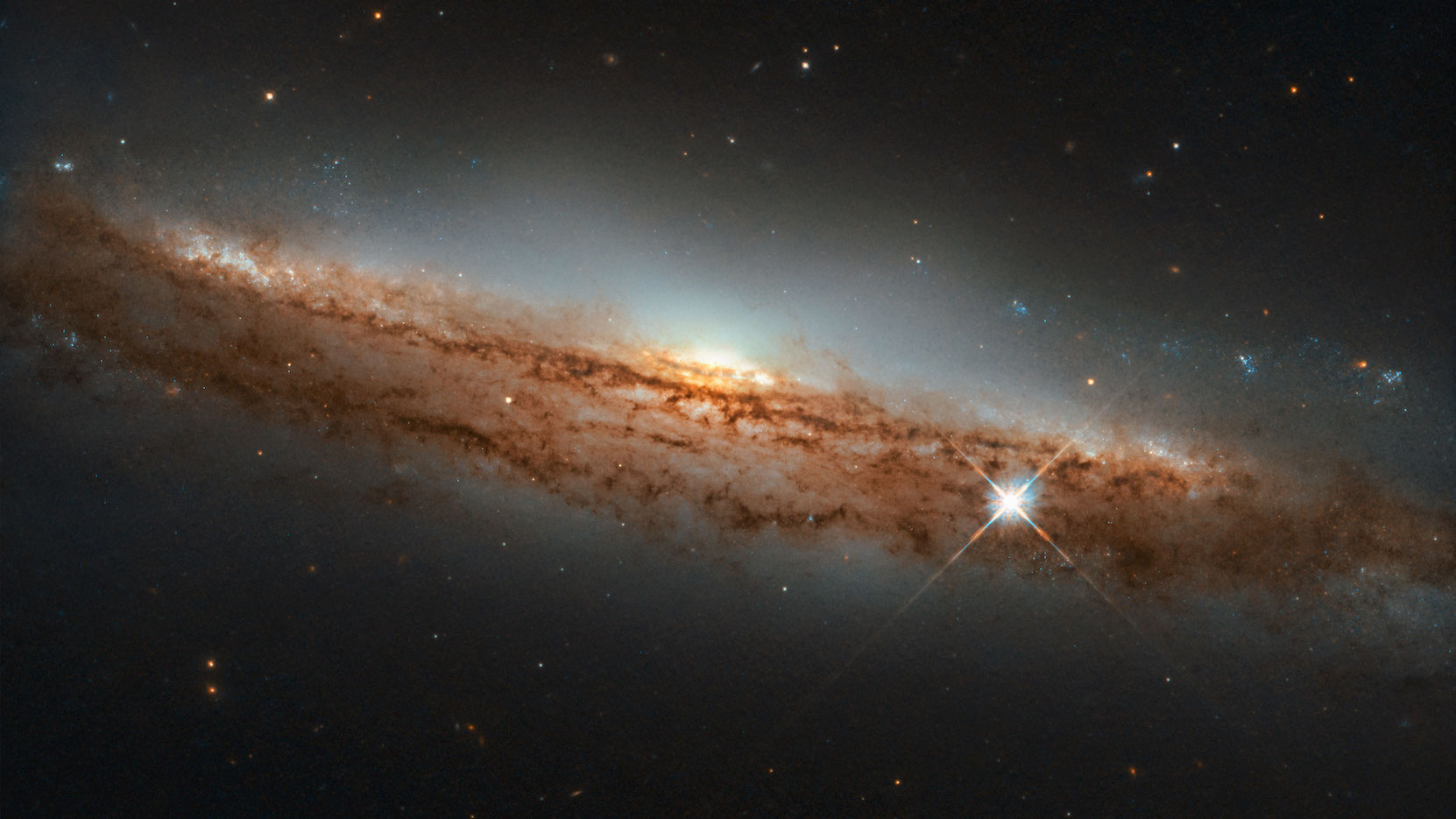Extra-galactic distances are vast. The inability to take a spaceship, travel to galaxies of interest, and look at them from different sides, restricts astronomers to a two-dimensional view of galaxy structure. Yet, the same humongous distances also provide astronomers with a superpower: with relative ease they can look back in time and explore the state of evolution at an earlier epoch of cosmic history, simply by observing galaxies a few billion light-years further away.
Sensitive surveys carried out from the ground and from space, including the largest-area near-infrared Hubble survey to date, have now amassed samples containing many tens of thousands of galaxies spanning 11 billion years of cosmic history, and providing for each galaxy information on its basic 2D structure and the amount by which its stellar light has been affected by dust clouds mixed among the stars.
Exploiting this unique observational resource, a team of astronomers led by Bath-China Scholarship Council (CSC) student Junkai Zhang have now turned the situation around.
Junkai Zhang explains: “We can’t observe a single galaxy from different angles, but we can select a large number of them that are close siblings. Since we can reasonably assume they will be oriented with respect to Earth under random viewing angles, we can then statistically reconstruct their 3D nature.”
Doing so, the team was able to learn not only about the three-dimensional distribution of stars within galaxies, but also about the distribution of dust. By mass, dust may not appear as a very significant ingredient to build a galaxy. Less than a percent of the ordinary matter comes in the form of such micron-sized grains of carbon, silicon and other heavy elements. Yet, take the dust away, and all of the physics of star formation changes. Knowing its nature and evolution thus underpins our understanding of the cosmic baryon cycle, from diffuse gas to dense molecular clouds and eventually the formation of stars.
Professor Stijn Wuyts from the Department of Physics at the University of Bath, the project supervisor, added: “At first, we encountered a familiar phenomenon. The starlight of sibling galaxies that we happened to view edge-on was more dust-reddened, exactly what you expect from a sightline piercing through a larger column of dust. However, as we investigated more and more distant galaxies, the trend gradually vanished. In fact, the level of dust obscuration remained modest regardless of orientation, surprisingly so given the more compact nature and richer interstellar medium of galaxies in the early Universe.”
By using Bayesian population modelling and radiative transfer calculations, the team concluded: only if the fraction of dust locked up in dense clumps is larger within galaxies at early cosmic times can three independent observational constraints be reconciled: the mass of dust present, the impact it has on the emerging stellar light, and the observed galaxy structure.
In the new paper, published in the Monthly Notices of the Royal Astronomical Society, the authors also highlight an important implication of their work regarding one of the most basic measurements of galaxies’ structure: their size. By lack of hard outer edge, the sizes of galaxies are often parametrized as the radius containing half the light. Seminal papers based on Hubble deep fields have used such metrics to piece together a picture of how galaxies grow from the inside out. Yet, central dust columns are larger than those pervading the outskirts of galaxy disks, and as a result more of the central starlight will be blocked. Size measurements from Hubble Space Telescope observations may thus overestimate the true extent of a galaxy’s stellar distribution, a bias that will disproportionally affect massive galaxies during the peak of cosmic star formation 10 billion years ago, warn the authors. Luckily, help is on the way. The James Webb Space Telescope (JWST) is pushing sharp imaging of distant galaxies to longer wavelengths, providing a powerful means to suppress the misleading imprint of dust on galaxies’ structural appearance.
Upon completion of his PhD at Bath, Bath-CSC PhD student Junkai Zhang looks forward to continuing the development of a 3D spectral and structural modelling toolbox for galaxies near and far as a postdoctoral researcher at Beijing’s prestigious Tsinghua University, often referred to as China’s MIT.

